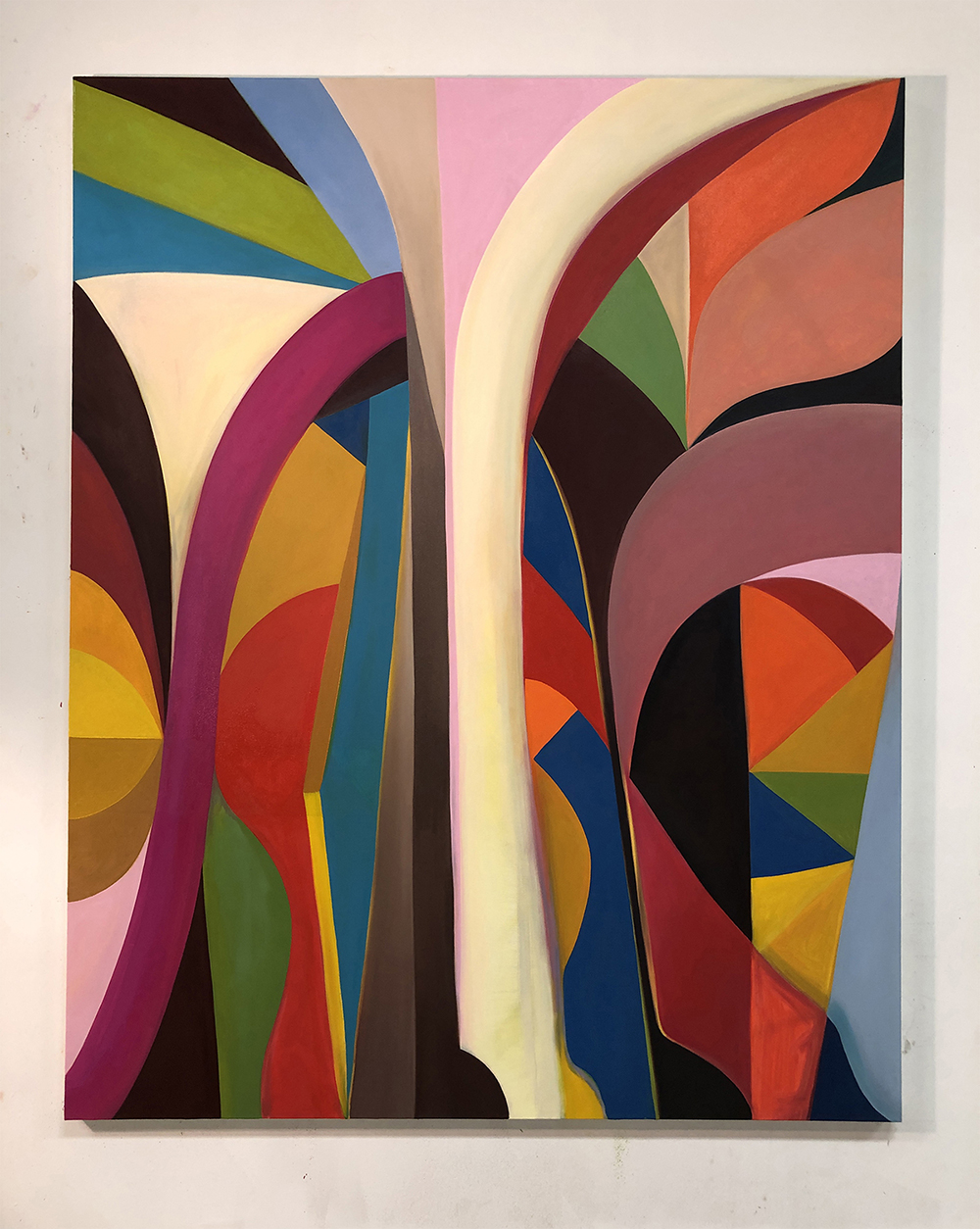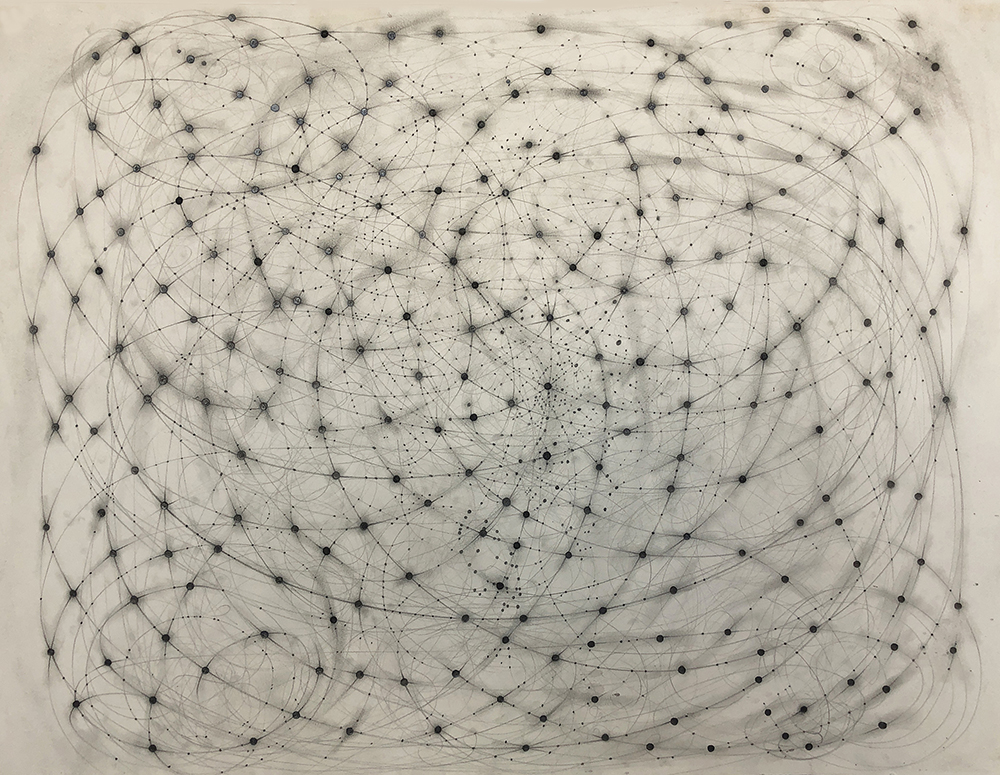
PAUL KRAINAK
Under her designation of “Systems and Structures,” Andrea Ferrigno plots the stratosphere in graphite. In dizzying constellations, like the drawing “Static Search,” delicate contours arc from one dark polestar to another. Passages compress and then re-open as they flow across and then dive into the surface. By rendering some details slightly less focused or smaller than others, the space becomes a pulsating body of unpolished gems. Some trajectories are smudged adding more to a buoyed sensation of spatial pyrotechnics. Despite an ultimately flat, monochromatic field, she achieves full-blown pigmentation and voluminous space by improvising on the astronomical.
Her painting and printmaking have also been a reflection on the various ways we comprehend the physical universe. She is particularly fond of sinewy structural divisions of the canvas, scrupulously crafting edges that lead to authoritative structural detail, lively networks of color, and restfully submerged chambers. On occasion her images appear particularized –– unnaturally lurching foreground organisms supported by uniformly restrained backgrounds. Despite a variety of environmental and cosmological references her subjects are flat, abstract, and properly in dialogue with themselves.
More recent work is a canny hybrid of two critical but not currently in vogue painters –– Jack Tworkov and Brice Marden. She floats between Tworkov’s seminal gestural palette and his later geometric explorations of the golden section. With Marden it’s his inexhaustibly fluid maze configurations that seem to dissolve while you’re scanning them. Ferrigno’s color isn’t novel. It’s cheerfully saturated and judiciously balanced pigment gracefully awash in the most hospitable spaces. Using technical studio processes and mediums that denote abstraction as a still-viable subject she underlines its growing significance for a generation tiring of juvenescence and conceptual neutrality.
Ferrigno dovetails on the dismissed formalist critique once embedded in academia. The cultivation of a few structural currents that run through her drawings, prints and canvasses are remarkable visual calculations on how she sees. Here is a view of the modern, with all its flaws and indulgences, still intellectually absorbing, wonderfully hued, and resilient. The pictures assert that the 20th century and contemporaneity cohere through a recitation of observances, asymmetric patterns and improvised perspectival modifications.
She’s fully engaged in the present, and her work advocates for the local and cyclical –– the topological and the morphological. Her art and her interest in science was nurtured by mentors at the Kansas City Art Institute and the University of Iowa. A consciousness of her natural surroundings, the regional economy, and architecture helped to slant her construction of the modern through local histories and traditions of creative production. The work represents a progressive way of thinking about genres like landscape and disciplines like mapmaking. Inland art traditions that emphasize the presentness of materials and the significance of technologies like printmaking, have also afforded her a research opportunity independent of the market.
Ferrigno considers scientific, technological and design models that mediate our understanding of the world. The disciplines of biology and archeology, for example, are vast, increasingly important, and clearly beautiful. Being curious about systems and knowledge bases that may be transferable to art language is an exceptional form of creative inquiry. Ferrigno’s efforts are a paradoxical hybrid of the critically modern and today’s more laissez-faire studio ritual –– one logical and detached and the other embracing and uncensored.
The artist will be on sabbatical from her position at Knox College next year and working on a one person show at the American University in Paris in April 2021.
Paul Krainak is professor of painting and director of Inland Studies Center, Bradley University



Recent Comments